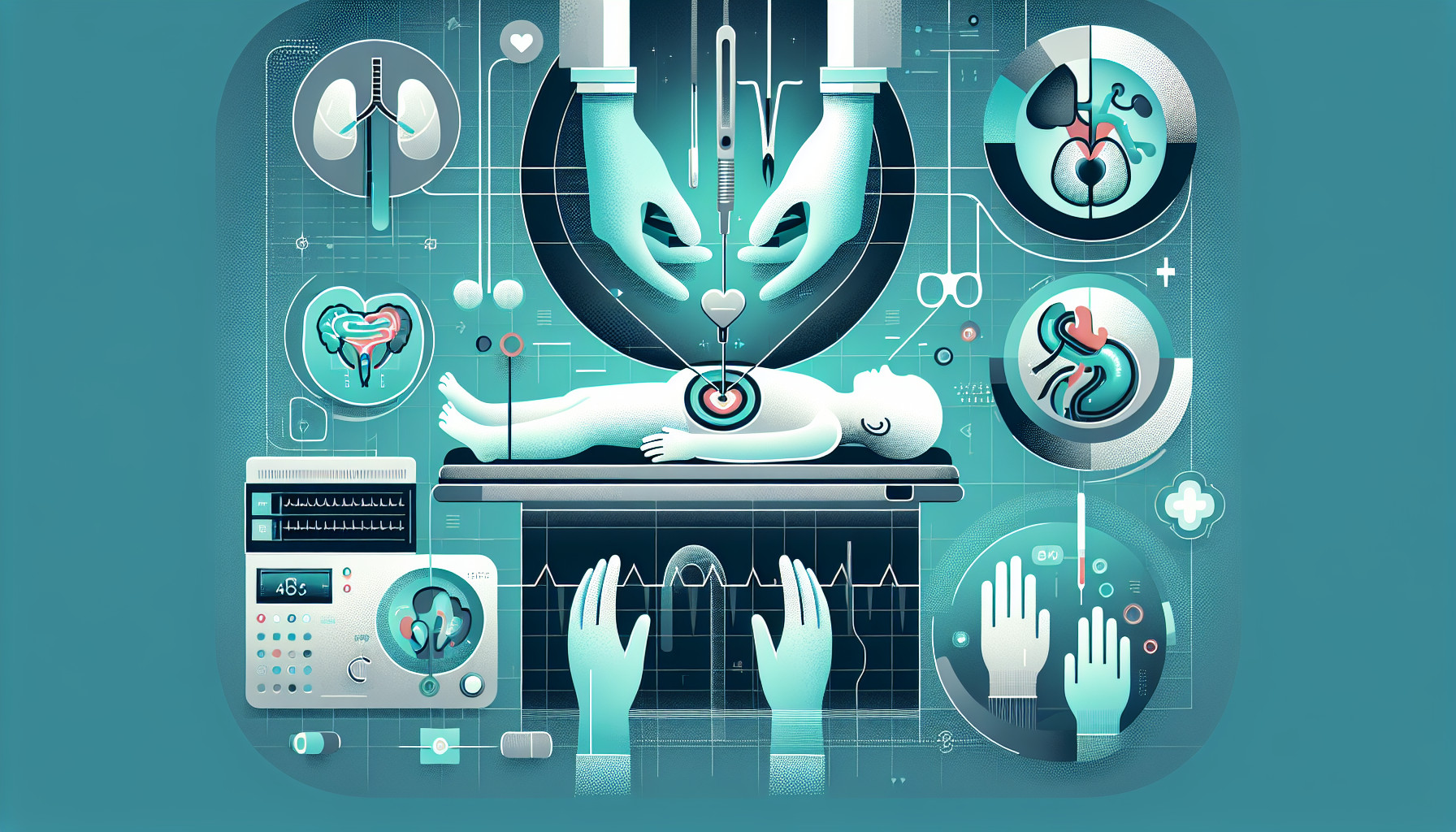Our Summary
This research paper reviews and compares two main types of pediatric inguinal hernia surgeries: totally laparoscopic repairs (LR) and laparoscopically assisted repairs (LAR). The authors looked at studies from the past 20 years that reported on recurrence, complications, and time taken for the surgery. They wanted to find out which type of surgery is best for children.
They found twenty-one studies that matched their criteria, with participants ranging from 9 days to 18 years old. The studies showed that the chances of the hernia coming back after surgery were about the same for both types of surgery. However, there were slight differences in complications after surgery. Children who had laparoscopic repairs were more likely to develop a temporary condition called hydrocele, while those who had laparoscopically assisted repairs were more likely to have problems with wound healing.
The time taken for the surgery was slightly shorter for laparoscopically assisted repairs, but this difference was not statistically significant, meaning it could have just happened by chance.
Overall, the researchers concluded that both types of surgery are equally safe and effective for repairing pediatric inguinal hernias. Each type has a slightly different risk of complications, but the overall rates are the same.
FAQs
- What are the two main types of pediatric inguinal hernia surgeries discussed in the research paper?
- What were the main differences found between totally laparoscopic repairs and laparoscopically assisted repairs in children?
- Did the research conclude that one type of hernia repair surgery is more effective or safer for children than the other?
Doctor’s Tip
A helpful tip a doctor might tell a patient about pediatric hernia repair is to discuss with the surgeon the different types of surgeries available and the potential risks and benefits of each. It is important for the patient and their family to be informed and involved in the decision-making process to ensure the best outcome for the child. Additionally, following the surgeon’s post-operative instructions and attending follow-up appointments is crucial for a successful recovery.
Suitable For
Pediatric patients who are recommended for hernia repair typically include infants and children who have been diagnosed with an inguinal hernia. Inguinal hernias are common in children and are often diagnosed during routine physical examinations. Symptoms of an inguinal hernia in children may include a bulge or swelling in the groin area, pain or discomfort, and in some cases, the hernia may become incarcerated or strangulated, requiring immediate surgical intervention.
Surgical repair of pediatric inguinal hernias is recommended to prevent potential complications such as bowel obstruction, incarceration, or strangulation. The decision to recommend surgery is typically based on the size of the hernia, the presence of symptoms, and the risk of complications. In general, pediatric patients with inguinal hernias that are symptomatic, irreducible, or at risk for incarceration or strangulation are recommended for hernia repair.
In some cases, pediatric patients with asymptomatic hernias may also be recommended for surgery to prevent potential complications in the future. The decision to recommend surgery for asymptomatic hernias is typically based on the age of the child, the size of the hernia, the risk of complications, and the preferences of the child’s parents or caregivers.
Overall, pediatric patients who are recommended for hernia repair are typically those with symptomatic hernias, irreducible hernias, hernias at risk for complications, or asymptomatic hernias that pose a potential risk for complications in the future. The decision to recommend surgery is typically based on the individual needs and circumstances of each patient, and is made in consultation with a pediatric surgeon.
Timeline
Before pediatric hernia repair, a patient may experience symptoms such as a visible bulge in the groin area, pain or discomfort, and occasional vomiting or nausea. They may also undergo a physical examination and possibly imaging tests to confirm the diagnosis of a hernia.
After pediatric hernia repair, the patient will typically experience some pain and discomfort at the surgical site, which can be managed with pain medication. They may also have restrictions on physical activity and lifting heavy objects for a period of time to allow for proper healing. Follow-up appointments with the surgeon may be necessary to monitor recovery and ensure that there are no complications. In general, most patients can return to their normal activities within a few weeks after surgery.
What to Ask Your Doctor
What are the risks and benefits of each type of surgery (totally laparoscopic repair and laparoscopically assisted repair) for pediatric inguinal hernias?
How long is the recovery period for each type of surgery, and are there any restrictions on activities during the recovery period?
What is the likelihood of the hernia recurring after surgery, and what are the signs to watch out for?
What are the potential complications of each type of surgery, and how are they typically managed?
Are there any factors that would make one type of surgery more suitable for my child’s specific case?
What is the experience and success rate of the surgeon in performing each type of surgery for pediatric inguinal hernias?
Are there any long-term effects or considerations to keep in mind after undergoing either type of surgery for pediatric hernia repair?
How frequently will follow-up appointments be needed after the surgery, and what will be checked during these appointments?
Are there any lifestyle or dietary changes that should be made before or after the surgery to optimize the outcome?
Can you provide any additional information or resources for me to learn more about pediatric hernia repair and the specific type of surgery being recommended for my child?
Reference
Authors: Petridou M, Karanikas M, Kaselas C. Journal: Pediatr Surg Int. 2023 Jun 3;39(1):212. doi: 10.1007/s00383-023-05492-0. PMID: 37269352
